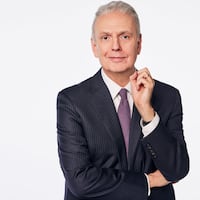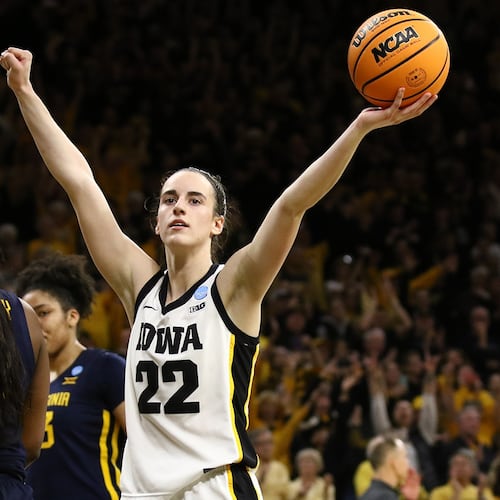Sports are itching to restart — or, in some cases, simply to start. NBA facilities are reopening. The NFL is trying to figure how to hold training camps, and not the virtual kind. Baseball is hoping to resume training by June, the season tentatively set to begin in July.
All the above are almost certain to play games, assuming games are played, behind locked gates. All players and coaches and staff will get tested daily/weekly, which is not, we must say, the level of care available to the average Joe/Jane. Every precaution will be taken to keep seasons, assuming they start, from having to stop again.
But here’s where we wonder: What happens if a player/coach/staff member tests positive?
» MORE: Players, teams who have tested positive for the coronovarius
Maybe you’re saying: If it’s one person out of many, the show can go on. But is it apt to be only one person? Could play really and truly continue?
Rudy Gobert testing positive for COVID-19 essentially shut down every U.S. sport. Before his result was made known on the night of March 11, it had just been announced that the NCAA tournament and conference convocations would continue without spectators. Within 20 hours of the Gobert news, everything had stopped — the NBA, the NHL, college sports, the MLS and spring training. Such was the power of one diagnosis.
Businesses have begun to reopen, though not all businesses. Seeing more movement around us, it's possible to believe the worst is past. It's also possible to wonder if reopening won't take us back to where we were two months ago, which was running for cover. Ronaldo Souza was set to fight at UFC 49 in Jacksonville, Fla., on Saturday. He tested positive. So did two of his cornermen.
Those working in the White House are tested often. Credentialed reporters have their temperatures taken and are made to keep a social distance in the briefing room. Over the weekend, one of the president’s military valets tested positive; so did the vice president’s press secretary, who’s married to one of the president’s chief advisors.
From the New York Times: "If it is so hard to maintain a healthy environment at 1600 Pennsylvania Avenue, the most famous office address in the world, where staff members are tested regularly, some as often as every day, then how can businesses across the country without anywhere near as much access to the same resources establish a safe space for their workers?"
Oh, and there’s this: Dr. Anthony Fauci, who has become known as “America’s point guard” — he played hoops in high school — is under “a modified quarantine.”
I realize there are some who believe the coronavirus has been overblown. Nearly 80,000 Americans are no longer able to argue the point. As much as we’d like to wish this thing into non-existence, it’s still here. We’re still months away from a vaccine, and some among us must weigh the cost of continuing employment against the worth of personal health. On “Face The Nation” Sunday, Kevin Hassett, one of the president’s economic advisers, said: “It’s scary to go to work.”
And that, we reiterate, is in the West Wing. It’s not on a basketball court, a hockey rink, a baseball diamond or a football field. It’s not plying an occupation where physical contact with other humans is an expectation, not an accident. (Less so in baseball, but batters and catchers and home-plate umps don’t stand six feet apart.)
NBA facilities have opened for staggered individual workouts without coaches. Nothing team-wide is permitted. Locker rooms and showers remain closed. Let’s transplant such an approach to an NFL training camp held in the heat of summer: Do you see any way that’d work?
These, see, are TEAM sports. Leagues can seek to isolate players/coaches/staff in quarantined hotels and on private planes and chartered buses, but at some point more than 10 people must occupy the same limited space at the same time. Leagues are desperate to play because they’re hemorrhaging money, but the pragmatist in me keeps asking: Without a vaccine, are sports an absolute necessity?
Adrian Wojnarowski of ESPN reported that NBA commissioner Adam Silver held a conference call with players Friday. Silver is quoted as saying: "Until there's a vaccine, or some cocktail preventing people from dying from the virus, we are going to be dealing with this collectively. The ultimate issue is how much risk we're all comfortable taking."
Wearing masks and working from home and keeping our distance haven’t made the virus go away. Let’s say you’re a professional healthy athlete between the age of 21 and 35. You’re not in a high-risk group, but you could still get sick, or you could transmit the sickness to those around you. You’re making millions of dollars, so you’d hate not to play. But what if trying to squeeze a few games into an already truncated season cost you more than money? (Remember, you’re already rich.) Mightn’t you be tempted to say, “I’ll wait on the vaccine; see you folks next year”?
My favorite sports commentator in the world is a cartoonist for The Guardian. Every Tuesday, David Squires draws a strip mostly making fun of what just happened in the English Premier League. (As much of an Anglophile as I like to think I am, many of his references elude me, which is why I spent a half-hour each week scrolling through the comments for elucidation.)
Last week he turned his acidic talents to what the EPL is calling “Project Restart.” In one panel he broached the notion of staging matches on a decommissioned oil rig. In another he depicted famous coaches Jurgen Klopp, Pep Guardiola and Jose Mourinho at an Antarctic research station. (These were satirically proposed as “safe” places.) In the final panel, Squires dropped the hammer: “Of course, it would take only one person to test positive for COVID-19 for Project Restart to collapse.”
As much as I hate to say it, that’s where every sport in the world finds itself today — hoping to play games and trying to ensure safety, all the while asking: “Who’ll be our Rudy Gobert? And what will we do then?”
About the Author
The Latest
Featured

